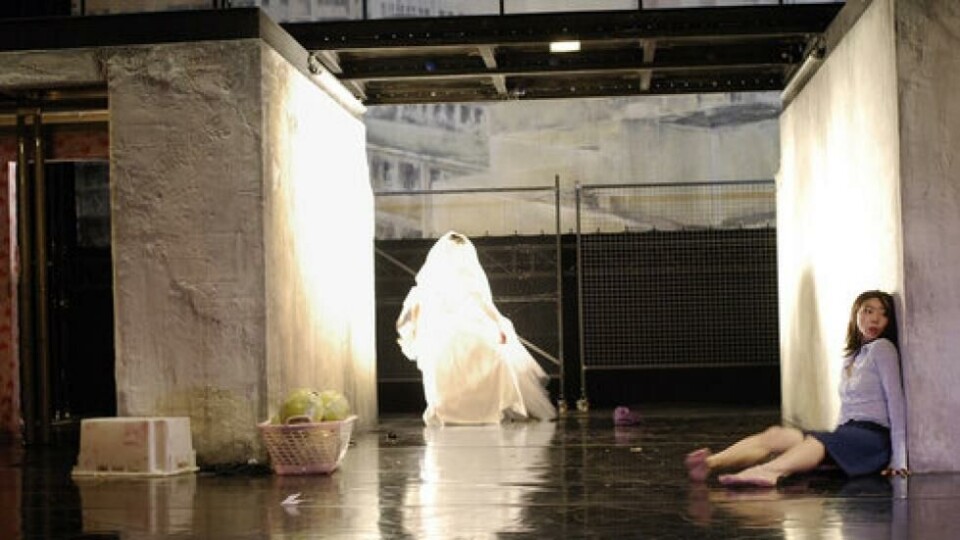
Constanza Macras «Megalopolis» (2010)
«The wish to be entirely in the present includes to live on top of yesterday's trash», stated Constanza Macras. Her dance and theatre performance «Megalopolis» (2010) is being streamed from Schaubühne tonight, May 5th.
Constanza Macras’ compagnie Dorky Park belongs to the most acclaimed troupes in the field of contemporary dance and theatre today, a position that already signifies her special fusion of dance and theatre in most of her work. This combination of choreography and theatre has been the result of her personal artistic development as a dancer and choreographer that spans from her upbringing in Buenos Aires (with a flowering small theatre movement after the end of Argentina’s dictatorship in 1983) over education at the Merce Cunningham Studio in New York to Amsterdam as a hot spot for new dance and her final advent in Berlin in 1995. Not to forget the inspiring impact of Pina Bausch’s dance theatre during all those years. As Macras’ pieces are never pure dance, far from traditional formulas, her shows include language, pop culture and very often video in order to explore social issues for an expanded concept of dance theatre. Her first milestone production with the international Dorky Park troupe was the multi-venue Back to the Present in an abandoned department store in Berlin in 2003 which was two years later adapted for Schaubühne as the beginning of a collaboration that lasted until 2015. Macras became the principal partner choreographer for this theatre after Sasha Waltz, with such experiments as Shakespeare’s A Midsummer Night’s Dream in co-direction with Thomas Ostermeier in 2006 and a number of internationally awarded Dorky Park co-productions following, Megalopolis receiving the famed national FAUST prize.
Mingle of styles and genres
As a city is never one town but many, Megalopolis allows for stylistic diversity, for a wild mingling of styles, genres and sensibilities. As if it would represent the idea of a city with no generic order of cultural classification or social preferences, Macras’ choreography can take up street dance like hip-hop and break dance as well as stylized moves from daily life and quotes from dance traditions that appear as ironic clichés. Macras’ interest is not in the superstructure of power but rather in the quotidian microstructures, in small things, gestures and conflicts, of every-day life, as it is the place of dirty concrete structures under video billboards in Alissa Kolbusch’s stage design that looks like the least-commercial corner of a make-shift street market. Characters like drifters and drop-outs dwell there like aspiring artists and lost lovers. The issue of uprootedness, mirrored and to be heard in some of the verbal parts, is thereby not seen as exclusively negative - Macras’ life stories in that landscape of colourful urban decay contradict this with all their energy in the competition between the body and the social (and, precisely, the sexual). For Megalopolis she was inspired by Richard Sennett’s sociological study The Fall of the Public Man, with regard to his ideas of immigration and separation in cities. This appears as a recurrent theme in much of Macras’ work. The issue is treated with stories from all the people her company is composed of – Spanish-speaking, Japanese, English, Babylonian German. And often in a stylish pop mode that some people and critics have seen as trashy. The most remarkable scenic device, aside from the story material, is the cinemascope design of space for movement - and rarely you find the synchronicity of bodies but rather their unparalleled lives in respective dance figures with the music by Santiago Blaum. Not the synchronicity of dance moves makes the rules - while this may happen here and there for the rhythm of it all - but the chaotic separations of city life as it is.
Macras stated: “The wish to be entirely in the present includes to live on top of yesterday’s trash.”
